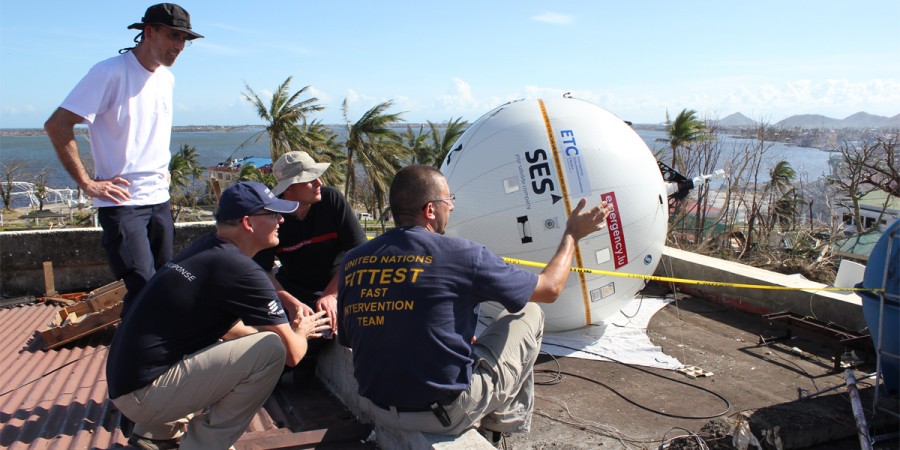Satellite Community signs Crisis Connectivity Charter in Support of Humanitarian Operations
For too many years there has been a misguided distrust between the humanitarian and private sectors. The former believed the latter was focused only on making a few bucks. The latter believed the former was stubborn and reluctant to change. With conflict raging across the world and millions of people in need of urgent life-saving assistance, this antiquated mind-set cannot persist.
Before, during and after crises, local communities must be at the centre of emergency response efforts. The onus is on the entire response community – humanitarians, governments and private sector alike – to strengthen their capacity to respond, recover and redevelop from disaster. To achieve this, the humanitarian and private sectors must play nice.
Earlier this year, the Government of Luxembourg and the Emergency Telecommunications Cluster (ETC) convened a World Humanitarian Summit (WHS) Business Consultation for the satellite industry. Attended by 21 representatives of the satellite community, the consultation sought to identify issues, provide recommendations and make commitments to improve engagement in humanitarian emergency response. Connectivity is vital for humanitarian operations, allowing more effective and accountable action, improving disaster resilience and strengthening local people to cope and recover. Established by the EMEA Satellite Operator’s Association (ESOA) and Global VSAT Forum, in collaboration with the ETC, the ‘Crisis Connectivity Charter’ is a direct outcome of this WHS Business Consultation. The Crisis Connectivity Charter contains a set of commitments by the satellite community to enhance connectivity in times of crises, facilitating communications between – to – from – and across all those responding to humanitarian emergencies, including affected communities. Principles of the charter include strengthening partnership between satellite industry, government and humanitarian sector; enhanced coordination to enable prioritization of humanitarian internet traffic during disaster operations; prepositioned satellite equipment; training and capacity building. The Charter formalizes protocols designed to accelerate access to satellite-based communications when local networks are affected after a disaster. It seeks to support the Emergency Telecommunications Cluster (ETC) – a global network of humanitarian, private sector and governmental organisations that work together to provide communications services in crisis situations – in implementing its activities.
The satellite community’s charter built on the experience with GSMA which launched the ‘Humanitarian Connectivity Charter’ for the mobile industry in early 2015. The Mobile Charter demonstrated that, while often competitors in business, companies can come together as an industry and commit to better supporting affected people, governments and humanitarians in emergency preparedness and response. The fundamentals of establishing humanitarian-private sector partnerships are not ground-breaking, but still seem difficult for some to attain. Partnerships – at their essence – are an agreement to cooperate and to advance mutual interest, so there must be give as well as take. Having said this, commercial agreements and humanitarian partnerships must not be mixed – there must not be any expectation to purchase. All parties must be transparent and aware from the outset about what the engagement seeks to achieve. The terms of collaboration must be well defined. For humanitarian-private sector partnerships to be worth the investment – time equals money after all – the relationship must produce reliable and predictable outcomes. As a close private sector member of the ETC recently said, “The ETC needs partners who will be there with us even when CNN leaves”. This goes for all humanitarian-private sector partnerships – we need ‘always in’, not ‘sometimes in’ partners.
Signatories of the Crisis Connectivity Charter regularly meet to confirm what, if there is an emergency tomorrow, they will provide, from equipment to services and training. These commitments will underpin realisation of the ETC2020 strategy which seeks to ensure that all those responding to humanitarian emergencies have access to vital communications services.
There are many horror stories of humanitarian-private sector relationships that have gone bust, but they cannot – and should not – define the way forward for all partnerships between these groups. Learn from past experiences and move on. We have to. Lives will literally be lost if we don’t.
N.B. Caption of the feature image: The ETC partnership with Government of Luxembourg and Ericsson Response is a strong example of a true collaboration that has stood the test of time and continues to deliver life-saving results.


Comments